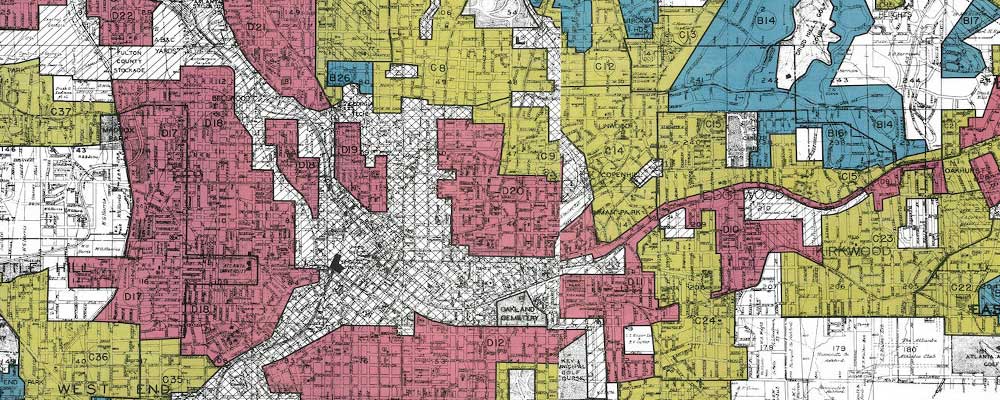Our EDI Commitment

This residential security map of Atlanta, 1938, is an example of redlining.
We thank the many voices, including members and leaders, that paved the way for this organizational transformation and fostered the roots of meaningful change.
Planning and Equity
In the United States, planning began to emerge as a standardized profession and practice in the early 1900s. The American planning history timeline shows the evolution of planning in the United States and how the practice has both influenced and responded to social changes in American society. Our timeline is evolving; we are actively accepting recommendations of significant events that address a legacy of inequitable planning practices or have sought to incorporate principles of diversity, equity, and inclusion into planning.
Racism and Planning
2020 marked a new chapter in the pursuit of equity in our country. Grave injustices were highlighted in America as our country grappled with the COVID-19 pandemic. Civil unrest in our cities was about much more than a demonstration against excessive force and discriminatory law enforcement practices towards Black Americans; it brought forth a movement of social reflection and community discourse.
This reflection must acknowledge the historical trauma of racism and discrimination inflicted on people of color, wrought by the planning profession itself, which led to structural disadvantages in housing, transportation, education, and employment that last to this day.
APA recognizes this reality and is working to center equity in all planning processes in keeping with our mission of creating great communities for all. From our landmark Planning for Equity Policy Guide, to the ethical principles that undergird the professional practice of planning articulated in the AICP Code of Ethics, to the new online public engagement toolkit and Social Equity Knowledgebase, we're working to help planners and others recognize and eradicate the bad policy decisions of the past.
Together, we can take an active role in rebuilding and transforming communities to create a society that ensures safety, health, and prosperity for all its inhabitants. APA will continue to develop and deliver tools, techniques, support, and encouragement to planners tirelessly combating all forms of racism and inequity. Learn more about how planners do this work! The Voices of Equity in Planning video series features planners who have been centering equity in their work to correct racial injustice, mitigate disparity, and improve the quality of life for marginalized people in all communities.
A Guiding Compass: APA's Equity, Diversity, and Inclusion Strategy
APA's Equity, Diversity, and Inclusion Strategy is a guiding tool that sets forth an organization-wide plan for how we better promote these understandings and practices, both inside and outside the planning community and profession. View the core areas that have helped strengthen our strategy.
Focused Priorities of APA's Equity, Diversity, and Inclusion Strategy



